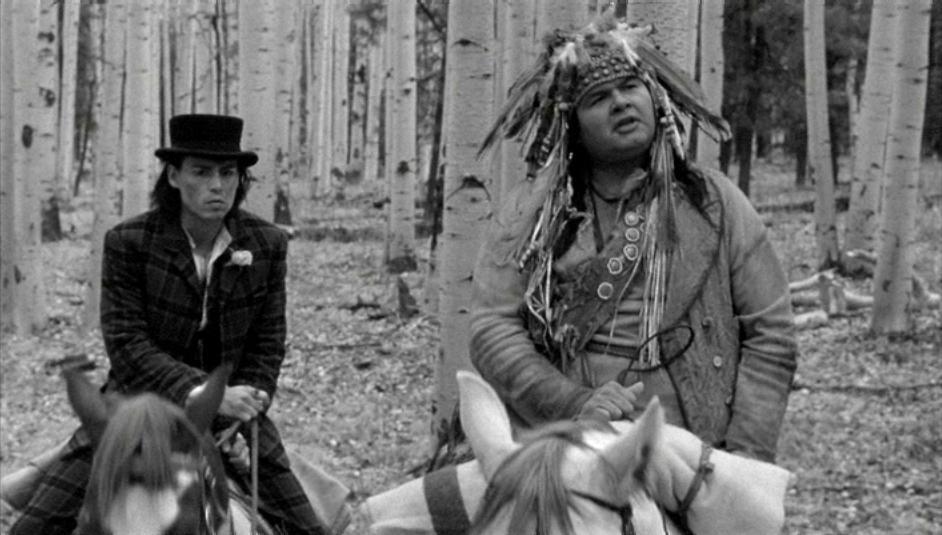From the Chicago Reader (April 5, 1996). — J.R.

The Neon Bible
Directed and written by Terence Davies
With Gena Rowlands, Diana Scarwid, Jacob Tierney, Denis Leary, Leo Burmester, Frances Conroy, and Peter McRobbie.

Two paradoxical facts about Terence Davies’s first film adaptation:
(1) It follows fairly closely The Neon Bible, a novel written by John Kennedy Toole for a literary contest in the mid-50s, when he was 16 — a decade before he finished work on his second novel, A Confederacy of Dunces, and about 15 years before he, still unpublished, committed suicide (A Confederacy of Dunces was published ten years later, The Neon Bible ten years after that). I don’t care much for The Neon Bible, a hackneyed mood piece set in a rural backwater of the deep south, but I think the movie, which seems 100 percent Davies, is wonderful.

(2) Of all the English-speaking films shown at Cannes last May, the two that got the most boorish and least comprehending reception by the English-speaking press were The Neon Bible and Jim Jarmusch’s Dead Man, though for nearly opposite reasons. Jarmusch, who’s long been criticized for coasting along in Down by Law, Mystery Train, and Night on Earth on the same kind of hip humor he virtually invented for Stranger Than Paradise, finally broke free and did something bold, original, political, dark, scary, outspoken, witty, and often beautiful — a black-and-white western that should be opening here sometime next month. Read more
From the Chicago Reader (October 21, 1994). This is also reprinted in my collection Movies as Politics. — J.R.
*** ED WOOD
(A must-see)
Directed by Tim Burton
Written by Scott Alexander and Larry Karaszewski
With Johnny Depp, Martin Landau, Sarah Jessica Parker, Patricia Arquette, Jeffrey Jones, Bill Murray, Lisa Marie, George “The Animal” Steele, and Vincent D’Onofrio.
*** PULP FICTION
(A must-see)
Directed and written by Quentin Tarantino
With John Travolta, Samuel L. Jackson, Uma Thurman, Bruce Willis, Ving Rhames, Maria de Medeiros, Tim Roth, Amanda Plummer, Harvey Keitel, Eric Stoltz, Rosanna Arquette, Christopher Walken, and Tarantino.
[The media] ask those who know nothing to represent the ignorance of the public and, in so doing, to legitimize it.
— Serge Daney, Sight and Sound
If you want a happy ending, that depends, of course, on where you stop your story. — Orson Welles
In Vamps & Tramps, Camille Paglia’s latest collection of sound bites and press clips, one finds an extended account of her long-term obsession with Susan Sontag, including the following nugget: “She is literally being passed by a younger rival, and she’s not handling it, I’m afraid, very gracefully. . . . I am the Sontag of the 90s, there’s no doubt of it.” Read more
Commissioned by Found Footage for its 4th issue (February 2018). — J.R.

We’re living through a confusing transitional period whose transitions are chiefly matters of financial speculation lying beyond our control. Theorizing our helpless condition — which often means attempting to rationalize it, or to adapt to it by other means — we’re obliged to use an out-of-date language. This antiquated language needs to be upgraded with a new vocabulary if we want to make useful sense of what’s happening — something that we haven’t yet figured out how to do. Just as “politically correct” language can sometimes be described as the language of defeat – struggling to make an adequate representation of a reality over which one has lost control – theoretical cinema suggests at times a farewell gesture towards a medium that has fled.
The fumblings to be found below are an attempt to clarify not so much five experimental films in 35-millimeter and CinemaScope by Peter Tscherkassky — L’Arrivée (1997-1999, 2:09 min.), Outer Space (1999, 9:58 min.), Get Ready (1999, 1:06 min.), Dream Work (2001,11 min.), and Instructions for a Light and Sound Machine (2005, 17 min.), all of which I find powerful, provocative, haunting, and ultimately confounding — as the confusing language used to describe them. Read more




